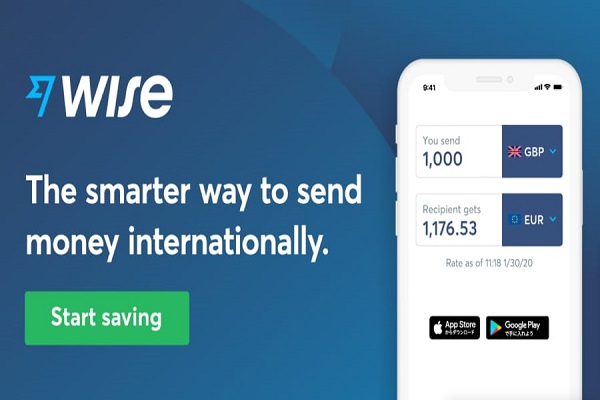Day 2
Guadalajara, Tlaquepaque, Tonalá, Zapopan and Guadalajara Centro
You Visit to Guadalajara, Tlaquepaque, Tonalá, Zapopan and Guadalajara Centro. The Guadalajara metropolitan area is divided into several parishes, including Tlaquepaque, Tonalá, Zapopan, and Guadalajara Centro. Each of them has its own identity that is different from the others and what were cities or small communities that got trapped in the urban spot over time and the growth of the city.
The main monuments and history of the city are in the city center. This is your starting point for getting to know the sights in Guadalajara.
Guadalajara's Cathedral with the secret of the mummy girl
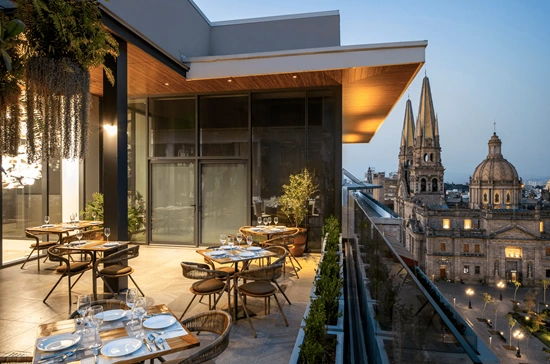
This is perhaps the most emblematic and representative monument in the city The construction began in 1558 and ended in 1618, so the cathedral is as old as the city itself.
The style is baroque time and in the cathedral are several religious relics, paintings , including the remains of the martyr Santa Inocencia . The secret of the mummy girl in the cathedral of Guadalajara, this secret you will get to know a mysterious, centuries-old mummified girl is one of the most attention grabbers in the historic center of Guadalajara, Mexico. It is located in the Catedral de la Asunción de María Santísima, which is simply referred to as the Guadalajara Cathedral in English. The church itself is a major landmark and tourist attraction. The elegant neo-Gothic bell towers from 1854 sit on top of a 17th century Spanish Renaissance-style building (several earthquakes over the years have required changes and remodeling in some places of the cathedral).
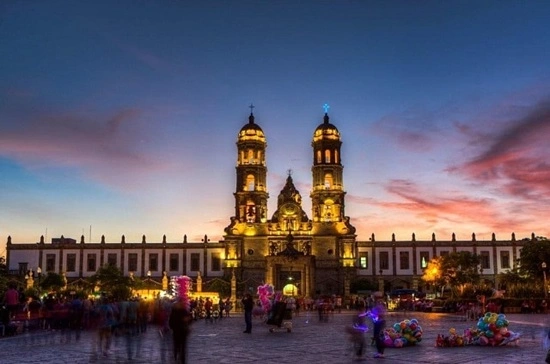
In the cathedral there are various altars as well as the remains of three cardinals and several bishops (there is even the heart of a Mexican president)
But it's the mummified remains of a little girl - known only as Santa Inocencia or Saint Innocence - that draws the most curious glances as well as some of the most passionate prayers from visitors. The glass showcase with her body near the main entrance of the church is always noticeable.
The real story of how Santa Inocencia came to rest publicly in Guadalajara Cathedral is open to debate. According to legend, the girl was born in Mexico in the 18th century stabbed to death by her father, who disapproved of her interest in Catholicism and grew angry when she received the Eucharist without his permission. After the father disappeared, the neighbors found the girl's body and carried her - still in the white dress she had worn for the service - to the cathedral, where it is kept to this day.
Another story - told on the little sign in the cathedral - says that the little girl's remains were removed from a cemetery in Rome in 1786 and sent to Don Vicente Flores Alatorre, a dignitary of the Catholic Church who taught divinity in 1788 the Cathedral of Guadalajara. Flores gave the remains to the Monastery of Agustinas de Santa Monica in Guadalajara. After the monastery was closed, the diocesan seminary began using the facility in 1869, and members of the seminary found the little girl's remains in the chapel. The seminary was evicted and moved to the San Sebastián de Analco temple in 1915 to bring Santa Inocencia to the new location.
When the seminarians were also kicked out of this place in 1924, Archbishop D. Francisco Orozco y Jiménez decided, to take the body to Guadalajara Cathedral. Additional information from this line of history - albeit not on public signage - claims that the girl was tortured and killed by Roman legionaries when Christianity rose in Europe - or that she was killed by her father in Rome after she went to the Christianity Converted Your body was placed in the Roman catacombs before its long journey to Guadalajara.
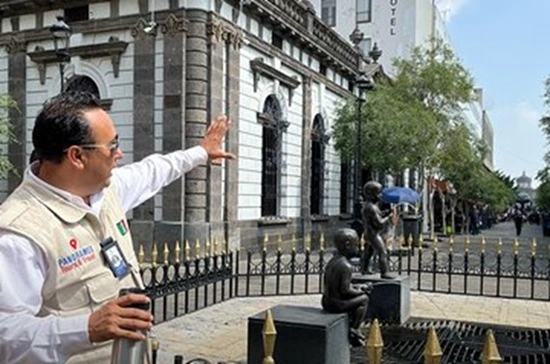
Rotonda de los Jaliscienses Ilustres and Regional Museum of Guadalajara
To one side of the cathedral is an esplanade with the rotunda of the illustrious Jaliscienses, a monument to honor the men and women who have transcended history. The remains of some of them can be found here
Next to the monument is the Guadalajara Regional Museum.
The museum building itself is very attractive, it dates from the colonial times and was used as a military barracks. Today you can learn a little more about the history of the area, from the first prehistoric settlements to their role in the Mexican Revolution. One of the most impressive pieces in the museum are the remains of a mammoth and the various colonial paintings.
Government palace
The government palace (Palacio de Gobierno) is located on the most beautiful of the four main squares of Guadalajara, the Plaza de Armas . This magnificent baroque building was started in 1643 and was not completed until 1774 . It is well worth a visit with its many columns with zigzag ornaments , large volutes and churrigueresque pilasters (estípites). Notable highlights in the interior include the beautiful old staircase and, in one of the council chambers, a series of murals depicting the War of Independence, as well as the heroes of the three Mexican Wars, painted by the famous fresco painter José Clemente Orozco in the state of Jalisco. In addition to the murals in the government palace, you will find a small exhibition on the history of Jalisco and Tequila.
Day 3
Degollado Theater
Degollado Theater has its immediately recognizable facade of columns and representation of Apollo with the nine muses. The neoclassical Teatro Degollado the city's premier and most beautiful performing arts venue. This impressive theater was completed in 1866 and is well worth a visit for its fine architectural details and lavish interior design. The exterior shows 16 Corinthian columns and a marble relief of Apollo surrounded by the nine muses. The theater is known for its excellent acoustics and is home to the Philharmonic Orchestra of Jalisco and the Guadalajara City Ballet, as well as international mariachi competitions. Even if you can't see a performance here, it's worth poking your head in to marvel at the plush, gilded interior. Like a red and gold cake, five balcony levels rise above the stage and dramatic frescoes with scenes from Dante's Divine Comedy adorn the ceiling.

Cabañas Cultural Institute
The UNESCO-listed Instituto Cultural Cabañas (formerly Hospicio Cabañas) is located in the historic core of the city center and is a magnificent neoclassical former hospital and orphanage, home to the disabled and orphans for more than 150 years, which began at the beginning of the 19th century was built.
Today the complex is home to the Cabañas Cultural Institute and the Heritage of Humanity. In addition to the graceful architecture of the building, based on similar designs in Paris and Madrid, the main focus here is the collection of 57 magnificent frescoes by José Clemente Orozco, which are widely regarded as his most beautiful works. Most of the murals adorn the ceiling and walls around the huge nave and dome, including his famous mural The Man of Fire (El Hombre del Fuego).
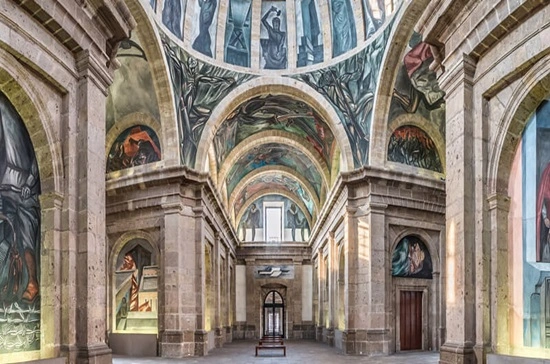
Tours are available in English and Spanish and are highly recommended.
Then visit the huge market hall (Mercado Libertad) nearby, in the regional costumes, pottery, paper flowers and musical instruments are offered for sale .
San Juan de Dios market, Temple of Atonement
Tapatíos (natives of Guadalajara) like to say that their market in San Juan de Dios - also called Mercado Libertad - is the largest indoor market in the world, with its 3 floors and more than 3,000 stalls you can find it all. True or not, the Mercado's modern building is full of traditional treasures worth looking through. A handful of stalls offer everything from paracho guitars to leather goods to delicious foods like gorditas and candy.

Temple of Atonement (Templo Expiatorio del Santísimo Sacramento)
Though one of the newer churches in Guadalajara - construction began in 1897 and didn't end until 1972 - the Templo Expiatorio del Santísimo Sacramento is without a doubt one of the most beautiful religious structures in the city. The architectural style of the temple is fundamentally different from the baroque style of the cathedral. This temple is more modern, but its architecture resembles the great medieval cathedrals of Europe. Immense and austere stone vaults, the exterior and lighting are incredible, but in reality, it is the interior that will impress you.

The neo-Gothic style church is famous for its ornate exterior and many components made in Europe. Highlights include the finely carved doors with bronze reliefs, exquisite mosaics from Italy, a unique German clock and an excellent carillon that can play 25 different pieces of music (it can also be played from inside the church) while figures of the 12 apostles move you around. Also of interest are the building's fine stained glass windows from France and the richly decorated golden altar with its many biblical stories.
Many visitors said this sprawling market was like a maze, adding that it was easy to get overwhelmed and even get lost in its crowded stalls. For many, it was not the market goods that attracted them to visit; It was the building itself. Many described the inside of the market and the promenades surrounding it as visually appealing, while others referred to this attraction as the best place for affordable local food. For some of the best restaurants in the market, travelers recommend checking out the longest line stalls that are most popular with locals.
Chapultepec Walk
The Paseo Chapultepec is located on Avenida Chapultepec, a city landmark since it v has arious monuments and surrounded by the glamor of the Perla Tapatia. Its breadth and beauty are present in the median and in the benches on which pedestrians can rest. You can admire the sculptures of the Niños Héroes and Ignacio Zaragoza, the fountains or some of the cultural manifestations that usually appear at the end of the week. Without a doubt, this emblematic street of beautiful Guadalajara is worth strolling on foot or by car .
Bethlehem Pantheon
The Panteón de Santa Paula, today Panteón de Belén, was built in 1848 by the architect Manuel Gómez Ibarra at the request of Bishop Diego de Arana y Carpinteiro.
The Museo del Panteón de Belén is an exhibition of funerary architecture from different eras. Because of its architectural richness, it is protected by the National Institute of Anthropology and History and is considered a national architectural treasure. The remains of many personalities who excelled in politics, education, science, music and literature have been deposited in this pantheon. It has a crowned chapel with Egyptian influence ,which used to be the central mausoleum where the remains of famous Jalisco men were found and which were later transferred to the rotunda of famous Jaliscienses. The pieces on display are the number of crypts in the pantheon.
Day 4
Tonalá and Tlaquepaque
Mexico is internationally recognized for its handicrafts and manual labor. Throughout the Mexican Republic, you can find patterns of this art in different expressions, depending on the region.
In the case of Guadalajara, both Tonalá and Tlaquepaque are exceptional examples of this.
In the past, Tonalá and Tlaquepaque were considered independent cities. Today they belong, along with seven others, to one of the three parishes that make up the metropolitan area of Guadalajara.
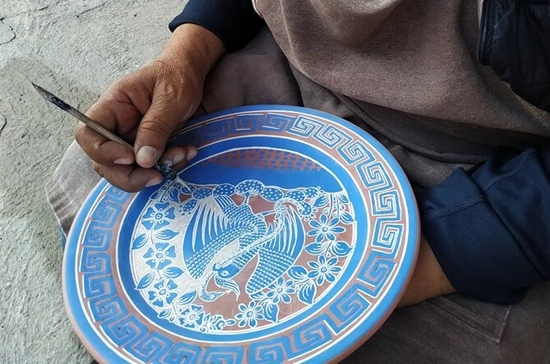
Although you can find handicrafts of international quality in both locations, each retains its own and unique identity, which makes it seem like independent locations that are well worth a visit depending on your preferences. Tonalá
Tonalá has always been recognized as a craft center. His pottery and pottery work is spectacular and attracts buyers from all over the world. Unlike Tlaquepaque, Tonalá still retains a more modest style and you won't find the modern and even luxurious art displays that you find in some Tlaquepaque shops.
In many workshops for ceramics, furniture and glass blowing you can see how the materials are processed and if you are interested you can buy them at a great price. One of the most interesting sights in Tonalá is the famous tianguis, which is made on Thursdays and Sundays. These Tianguis have existed since pre-Hispanic times when indigenous people from different regions met to exchange their products. Later, during the Spanish conquest, the tianguis continued to be made, but another day was added, Sunday.
You can visit the Tianguis Artesanal de Tonalá on Thursdays and Sundays from 8 a.m. to 3 p.m., which makes it an ideal destination to start the day. The Tianguis stretches for almost 3 kilometers outdoors. So take precautions as you are walking in the sun
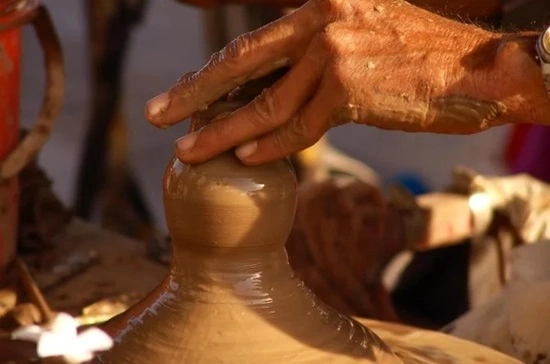
When you arrive in the center of Tlaquepaque , for a few moments you will think that you are no longer in Guadalajara, or even in a city, but in a small town trapped in time.
The stone streets, the walls painted in different colors and the old farms that now house exhibitions and shops by various designers make Tlaquepaque a unique destination in Guadalajara.
Like Tonalá, Tlaquepaque is full of handicrafts and some of the best interior designers have their shops here ; Some look like a modern art museum.
Day 5
Travel to Tequila, Jalisco
Legend has it that on a stormy night, a group of indigenous people from the area now known as tequila took refuge in a cave that was in an area surrounded by agaves.
Lightning struck during the night and set the agave on fire for several hours. When the storm passed, the aborigines noticed that where the agave had caught fire a pungent aroma was emanating and they decided to give it a try.
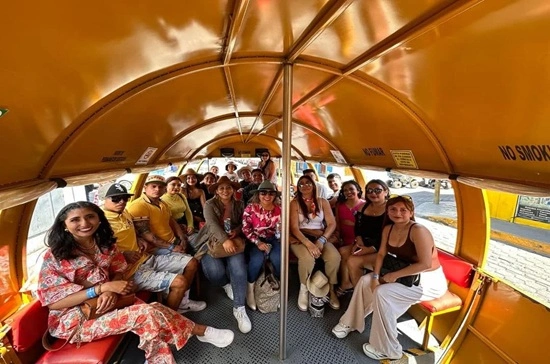
Feeling the sweet taste, they took it home with them. When they left the agave after a few days to rest, they noticed that a sparkling juice was beginning to sprout, they removed the bubbles and tasted the drink (pulque), which made them feel like a feeling of happiness overwhelm them.
From then on, they viewed the agave, with its sweet taste and intoxicating drink of happiness, as a gift from the gods, especially used by priests for rituals and special occasions.
Cultural Fact: Whether the legend is true or not, this is roughly the process used to make the most famous drinks in Mexico: pulque, mezcal, and tequila.
Originally was Pulque the drink of the Aztecs
When the Spaniards arrived, they distilled it and started making mezcal, later tequila. The differences lie both in the production process and mainly in the type of magic used. In the case of tequila, it is the agave Tequilana Weber with a characteristic blue color that made Mexico a UNESCO World Heritage Site in 2006 for its agave landscape and the old tequila industrial facilities in the region.
There are many places to visit in the Guadalajara area, but among them the magical city of Tequila is the most characteristic .
You'll visit tequila factories, learn the history of tequila, and of course, drink tequila.
The city of tequila pays a worthy tribute to this drink and an excellent representation of a traditional Mexican city. Vibrant colors, a relaxed atmosphere and a picturesque central square make it an ideal place to visit at any time of the year.
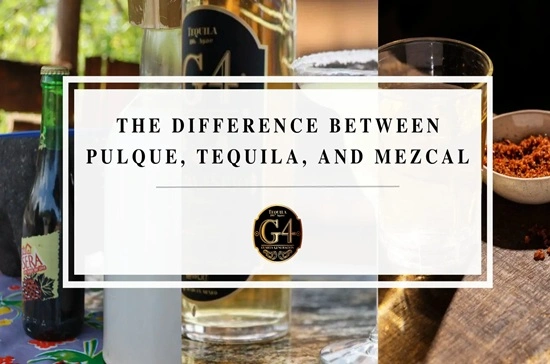
Within the city you will find the factories of two of the most famous tequila brands in the world: José Cuervo and Sauza.
Both give you a unique experience and as I would like to assume you will have the full time to spare, I recommend visiting both as they are very different.
Tour José Cuervo, La Rojeña
The La Rojeña de José Cuervo factory is more than a factory that produces tequila. It is a tourist attraction (the largest production of José Cuervos tequila is not made here). However, this experience is compensated for by the tequila tasting that I attended and recommended. They will take you to a private room and give you a tequila drinking and tasting class. From that moment on, your experience with the drink will be completely different. You'll never drink tequila the same way again
Tour Sauza, Casa Sauza
A few blocks from José Cuervo's factory is Casa Sauza, home of Tequila Sauza. In contrast to the tour in José Cuervo, on this visit you will enter the factory where all the tequila of the various Sauza brands is made . It is a fully functional factory where you must wear a helmet and vest for safety reasons. Today Sauza is owned by Japanese food and beverage maker Beam Suntory, and the entire facility is a living representation of the Japanese obsession with perfection and attention to detail. It is definitely a well worth a visit that is totally at odds with what you have seen before. After this After you've visited two tequila factories and tasted a few, you can complete your tequila knowledge by visiting the National Equila Museum . With its small but interesting exhibit, you can learn about the history of tequila production, as well as the artifacts that were used in its manufacture in the past.
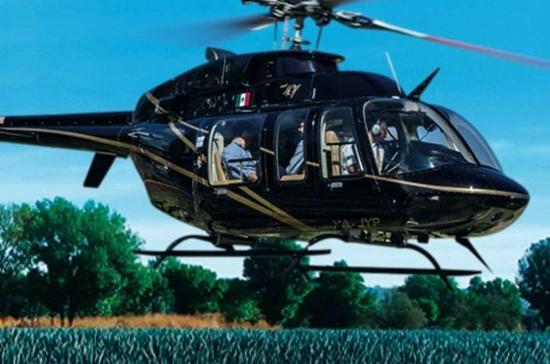
Day 6
Departure
is the departure to Mexico City
Travel information about the tour
Included services
➥ PROFESSIONAL TOUR GUIDE (request)
➥ LOCAL GUIDE
➥ 6 days city of Guadalajara with hotel accommodation
➥ VISIT City of Tequil
➥ VISIT and entry to the listed tours
➥ Private VIP transport for you alone
➥ Connection booking possible to other magical cities
➥ TRANSPORT FROM CENTRAL MEETING POINTS in CDMX (HOTEL) for you alone
➥ ENDS AT THE ORIGINAL MEETING POINT only for you alone
Languages: English, Spanish,
The romantic city of Guadalajara awaits you with tequila
Tour Duration: 6 days
Price: US Dollar $ 2,892.14
Exclusive services
➥ TIPPING
➥ Visits that are not listed
➥ Food and drink that are not listed
Please note that when choosing a hotel
may have a positive discount on your booking
The romantic city of Guadalajara awaits you on the Tequila
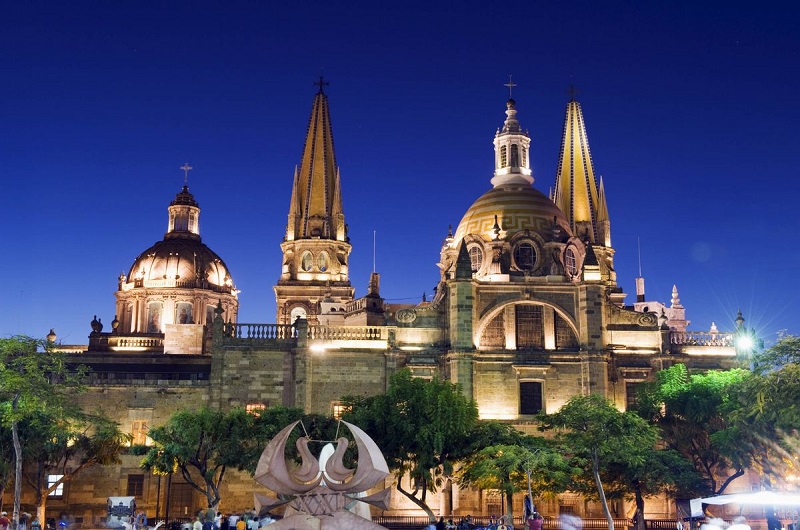


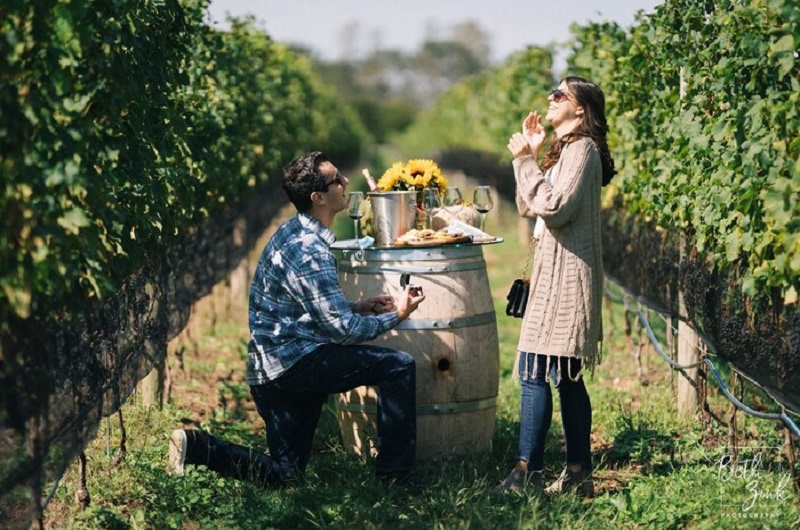
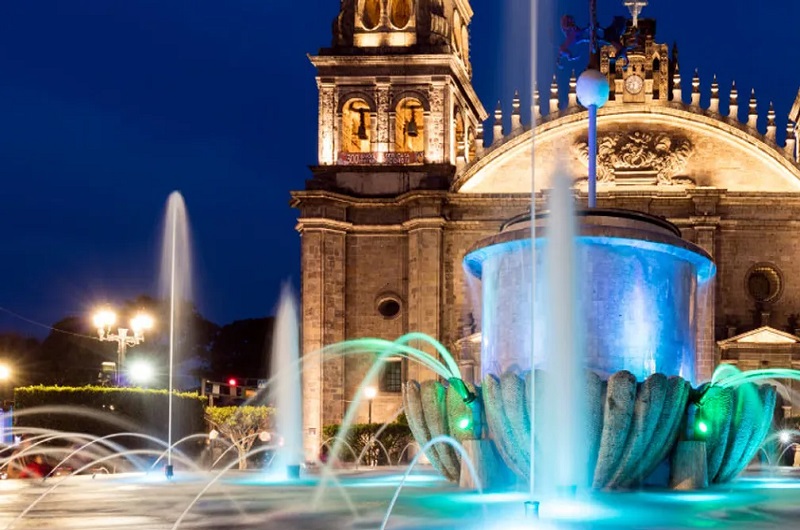


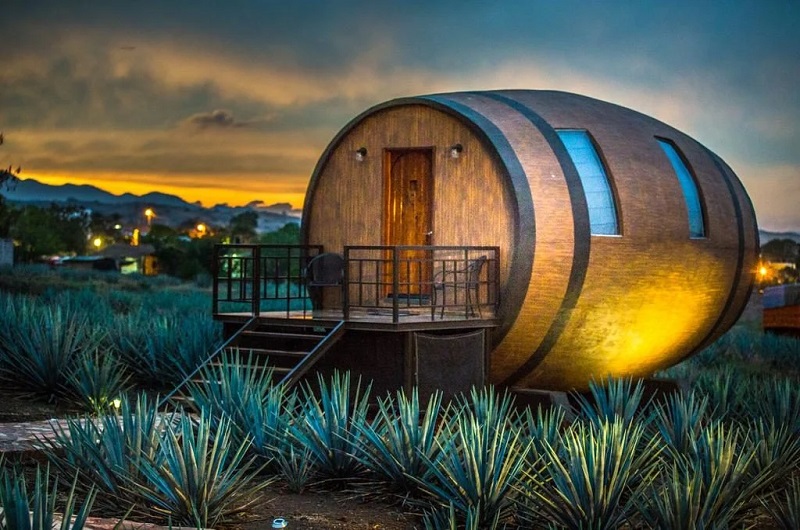

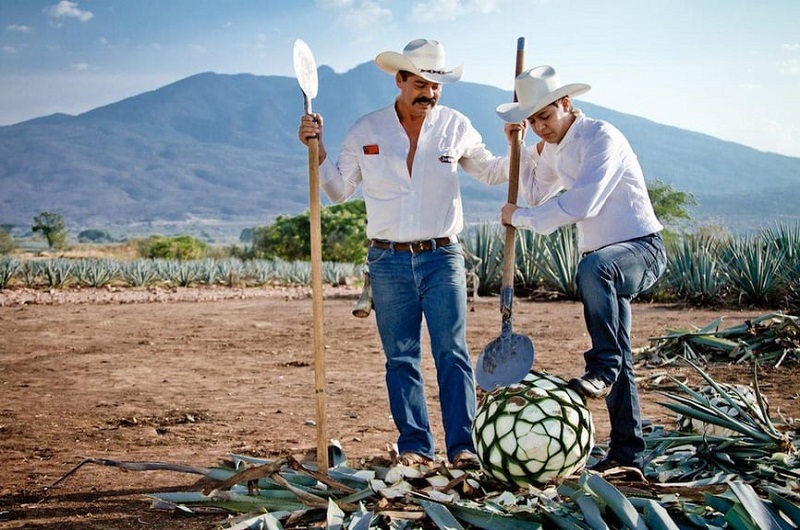

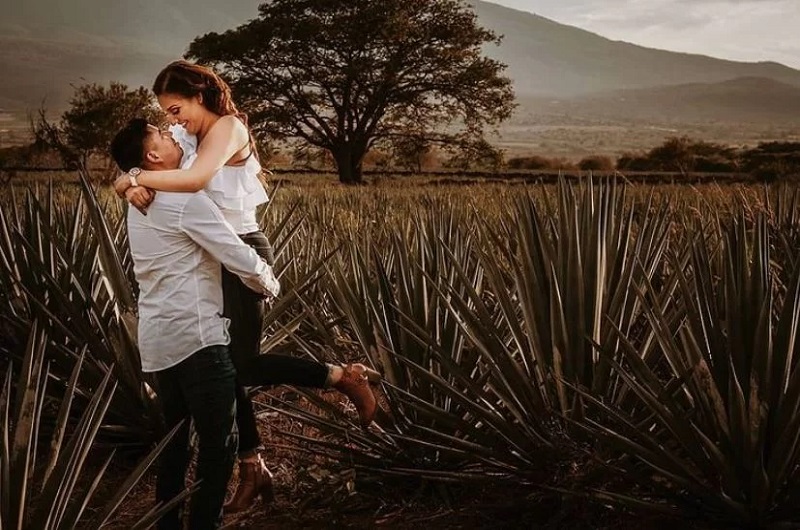
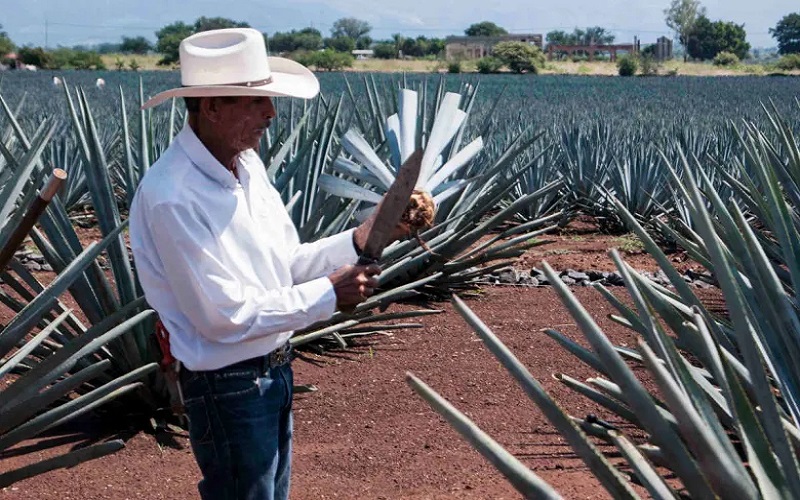



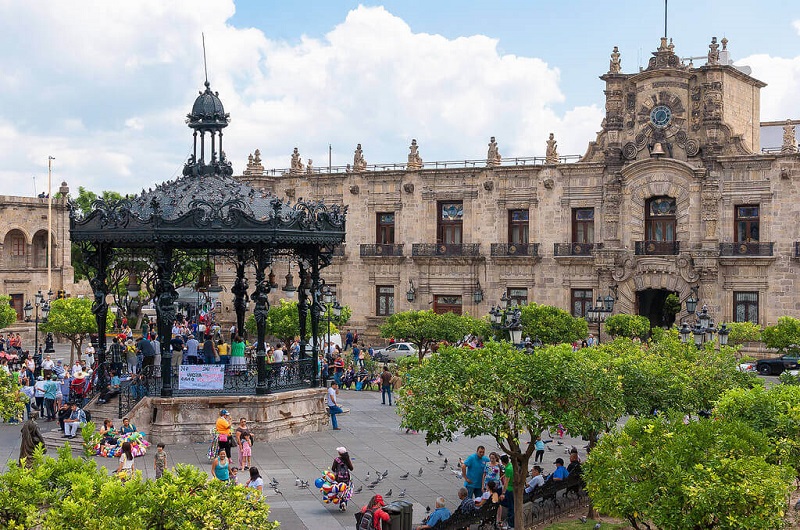

The main monuments and history of the city are in the city center. This is your starting point for getting to know the sights in Guadalajara.
Guadalajara's Cathedral with the secret of the mummy girl

This is perhaps the most emblematic and representative monument in the city The construction began in 1558 and ended in 1618, so the cathedral is as old as the city itself.
The style is baroque time and in the cathedral are several religious relics, paintings , including the remains of the martyr Santa Inocencia . The secret of the mummy girl in the cathedral of Guadalajara, this secret you will get to know a mysterious, centuries-old mummified girl is one of the most attention grabbers in the historic center of Guadalajara, Mexico. It is located in the Catedral de la Asunción de María Santísima, which is simply referred to as the Guadalajara Cathedral in English. The church itself is a major landmark and tourist attraction. The elegant neo-Gothic bell towers from 1854 sit on top of a 17th century Spanish Renaissance-style building (several earthquakes over the years have required changes and remodeling in some places of the cathedral).
The style is baroque time and in the cathedral are several religious relics, paintings , including the remains of the martyr Santa Inocencia . The secret of the mummy girl in the cathedral of Guadalajara, this secret you will get to know a mysterious, centuries-old mummified girl is one of the most attention grabbers in the historic center of Guadalajara, Mexico. It is located in the Catedral de la Asunción de María Santísima, which is simply referred to as the Guadalajara Cathedral in English. The church itself is a major landmark and tourist attraction. The elegant neo-Gothic bell towers from 1854 sit on top of a 17th century Spanish Renaissance-style building (several earthquakes over the years have required changes and remodeling in some places of the cathedral).

In the cathedral there are various altars as well as the remains of three cardinals and several bishops (there is even the heart of a Mexican president)
But it's the mummified remains of a little girl - known only as Santa Inocencia or Saint Innocence - that draws the most curious glances as well as some of the most passionate prayers from visitors. The glass showcase with her body near the main entrance of the church is always noticeable.
The real story of how Santa Inocencia came to rest publicly in Guadalajara Cathedral is open to debate. According to legend, the girl was born in Mexico in the 18th century stabbed to death by her father, who disapproved of her interest in Catholicism and grew angry when she received the Eucharist without his permission. After the father disappeared, the neighbors found the girl's body and carried her - still in the white dress she had worn for the service - to the cathedral, where it is kept to this day.
Another story - told on the little sign in the cathedral - says that the little girl's remains were removed from a cemetery in Rome in 1786 and sent to Don Vicente Flores Alatorre, a dignitary of the Catholic Church who taught divinity in 1788 the Cathedral of Guadalajara. Flores gave the remains to the Monastery of Agustinas de Santa Monica in Guadalajara. After the monastery was closed, the diocesan seminary began using the facility in 1869, and members of the seminary found the little girl's remains in the chapel. The seminary was evicted and moved to the San Sebastián de Analco temple in 1915 to bring Santa Inocencia to the new location.
When the seminarians were also kicked out of this place in 1924, Archbishop D. Francisco Orozco y Jiménez decided, to take the body to Guadalajara Cathedral. Additional information from this line of history - albeit not on public signage - claims that the girl was tortured and killed by Roman legionaries when Christianity rose in Europe - or that she was killed by her father in Rome after she went to the Christianity Converted Your body was placed in the Roman catacombs before its long journey to Guadalajara.

But it's the mummified remains of a little girl - known only as Santa Inocencia or Saint Innocence - that draws the most curious glances as well as some of the most passionate prayers from visitors. The glass showcase with her body near the main entrance of the church is always noticeable.
The real story of how Santa Inocencia came to rest publicly in Guadalajara Cathedral is open to debate. According to legend, the girl was born in Mexico in the 18th century stabbed to death by her father, who disapproved of her interest in Catholicism and grew angry when she received the Eucharist without his permission. After the father disappeared, the neighbors found the girl's body and carried her - still in the white dress she had worn for the service - to the cathedral, where it is kept to this day.
Another story - told on the little sign in the cathedral - says that the little girl's remains were removed from a cemetery in Rome in 1786 and sent to Don Vicente Flores Alatorre, a dignitary of the Catholic Church who taught divinity in 1788 the Cathedral of Guadalajara. Flores gave the remains to the Monastery of Agustinas de Santa Monica in Guadalajara. After the monastery was closed, the diocesan seminary began using the facility in 1869, and members of the seminary found the little girl's remains in the chapel. The seminary was evicted and moved to the San Sebastián de Analco temple in 1915 to bring Santa Inocencia to the new location.
When the seminarians were also kicked out of this place in 1924, Archbishop D. Francisco Orozco y Jiménez decided, to take the body to Guadalajara Cathedral. Additional information from this line of history - albeit not on public signage - claims that the girl was tortured and killed by Roman legionaries when Christianity rose in Europe - or that she was killed by her father in Rome after she went to the Christianity Converted Your body was placed in the Roman catacombs before its long journey to Guadalajara.

Rotonda de los Jaliscienses Ilustres and Regional Museum of Guadalajara
To one side of the cathedral is an esplanade with the rotunda of the illustrious Jaliscienses, a monument to honor the men and women who have transcended history. The remains of some of them can be found here
Next to the monument is the Guadalajara Regional Museum.
The museum building itself is very attractive, it dates from the colonial times and was used as a military barracks. Today you can learn a little more about the history of the area, from the first prehistoric settlements to their role in the Mexican Revolution. One of the most impressive pieces in the museum are the remains of a mammoth and the various colonial paintings.
Government palace
The government palace (Palacio de Gobierno) is located on the most beautiful of the four main squares of Guadalajara, the Plaza de Armas . This magnificent baroque building was started in 1643 and was not completed until 1774 . It is well worth a visit with its many columns with zigzag ornaments , large volutes and churrigueresque pilasters (estípites). Notable highlights in the interior include the beautiful old staircase and, in one of the council chambers, a series of murals depicting the War of Independence, as well as the heroes of the three Mexican Wars, painted by the famous fresco painter José Clemente Orozco in the state of Jalisco. In addition to the murals in the government palace, you will find a small exhibition on the history of Jalisco and Tequila.
To one side of the cathedral is an esplanade with the rotunda of the illustrious Jaliscienses, a monument to honor the men and women who have transcended history. The remains of some of them can be found here
Next to the monument is the Guadalajara Regional Museum.
The museum building itself is very attractive, it dates from the colonial times and was used as a military barracks. Today you can learn a little more about the history of the area, from the first prehistoric settlements to their role in the Mexican Revolution. One of the most impressive pieces in the museum are the remains of a mammoth and the various colonial paintings.
Government palace
The government palace (Palacio de Gobierno) is located on the most beautiful of the four main squares of Guadalajara, the Plaza de Armas . This magnificent baroque building was started in 1643 and was not completed until 1774 . It is well worth a visit with its many columns with zigzag ornaments , large volutes and churrigueresque pilasters (estípites). Notable highlights in the interior include the beautiful old staircase and, in one of the council chambers, a series of murals depicting the War of Independence, as well as the heroes of the three Mexican Wars, painted by the famous fresco painter José Clemente Orozco in the state of Jalisco. In addition to the murals in the government palace, you will find a small exhibition on the history of Jalisco and Tequila.
Day 3
Degollado Theater
Degollado Theater has its immediately recognizable facade of columns and representation of Apollo with the nine muses. The neoclassical Teatro Degollado the city's premier and most beautiful performing arts venue. This impressive theater was completed in 1866 and is well worth a visit for its fine architectural details and lavish interior design. The exterior shows 16 Corinthian columns and a marble relief of Apollo surrounded by the nine muses. The theater is known for its excellent acoustics and is home to the Philharmonic Orchestra of Jalisco and the Guadalajara City Ballet, as well as international mariachi competitions. Even if you can't see a performance here, it's worth poking your head in to marvel at the plush, gilded interior. Like a red and gold cake, five balcony levels rise above the stage and dramatic frescoes with scenes from Dante's Divine Comedy adorn the ceiling.

Cabañas Cultural Institute
The UNESCO-listed Instituto Cultural Cabañas (formerly Hospicio Cabañas) is located in the historic core of the city center and is a magnificent neoclassical former hospital and orphanage, home to the disabled and orphans for more than 150 years, which began at the beginning of the 19th century was built.
Today the complex is home to the Cabañas Cultural Institute and the Heritage of Humanity. In addition to the graceful architecture of the building, based on similar designs in Paris and Madrid, the main focus here is the collection of 57 magnificent frescoes by José Clemente Orozco, which are widely regarded as his most beautiful works. Most of the murals adorn the ceiling and walls around the huge nave and dome, including his famous mural The Man of Fire (El Hombre del Fuego).

Tours are available in English and Spanish and are highly recommended.
Then visit the huge market hall (Mercado Libertad) nearby, in the regional costumes, pottery, paper flowers and musical instruments are offered for sale .
San Juan de Dios market, Temple of Atonement
Tapatíos (natives of Guadalajara) like to say that their market in San Juan de Dios - also called Mercado Libertad - is the largest indoor market in the world, with its 3 floors and more than 3,000 stalls you can find it all. True or not, the Mercado's modern building is full of traditional treasures worth looking through. A handful of stalls offer everything from paracho guitars to leather goods to delicious foods like gorditas and candy.

Temple of Atonement (Templo Expiatorio del Santísimo Sacramento)
Though one of the newer churches in Guadalajara - construction began in 1897 and didn't end until 1972 - the Templo Expiatorio del Santísimo Sacramento is without a doubt one of the most beautiful religious structures in the city. The architectural style of the temple is fundamentally different from the baroque style of the cathedral. This temple is more modern, but its architecture resembles the great medieval cathedrals of Europe. Immense and austere stone vaults, the exterior and lighting are incredible, but in reality, it is the interior that will impress you.

The neo-Gothic style church is famous for its ornate exterior and many components made in Europe. Highlights include the finely carved doors with bronze reliefs, exquisite mosaics from Italy, a unique German clock and an excellent carillon that can play 25 different pieces of music (it can also be played from inside the church) while figures of the 12 apostles move you around. Also of interest are the building's fine stained glass windows from France and the richly decorated golden altar with its many biblical stories.
Many visitors said this sprawling market was like a maze, adding that it was easy to get overwhelmed and even get lost in its crowded stalls. For many, it was not the market goods that attracted them to visit; It was the building itself. Many described the inside of the market and the promenades surrounding it as visually appealing, while others referred to this attraction as the best place for affordable local food. For some of the best restaurants in the market, travelers recommend checking out the longest line stalls that are most popular with locals.
Chapultepec Walk
The Paseo Chapultepec is located on Avenida Chapultepec, a city landmark since it v has arious monuments and surrounded by the glamor of the Perla Tapatia. Its breadth and beauty are present in the median and in the benches on which pedestrians can rest. You can admire the sculptures of the Niños Héroes and Ignacio Zaragoza, the fountains or some of the cultural manifestations that usually appear at the end of the week. Without a doubt, this emblematic street of beautiful Guadalajara is worth strolling on foot or by car .
Bethlehem Pantheon
The Panteón de Santa Paula, today Panteón de Belén, was built in 1848 by the architect Manuel Gómez Ibarra at the request of Bishop Diego de Arana y Carpinteiro.
The Museo del Panteón de Belén is an exhibition of funerary architecture from different eras. Because of its architectural richness, it is protected by the National Institute of Anthropology and History and is considered a national architectural treasure. The remains of many personalities who excelled in politics, education, science, music and literature have been deposited in this pantheon. It has a crowned chapel with Egyptian influence ,which used to be the central mausoleum where the remains of famous Jalisco men were found and which were later transferred to the rotunda of famous Jaliscienses. The pieces on display are the number of crypts in the pantheon.
Day 4
Tonalá and Tlaquepaque
Mexico is internationally recognized for its handicrafts and manual labor. Throughout the Mexican Republic, you can find patterns of this art in different expressions, depending on the region.
In the case of Guadalajara, both Tonalá and Tlaquepaque are exceptional examples of this.
In the past, Tonalá and Tlaquepaque were considered independent cities. Today they belong, along with seven others, to one of the three parishes that make up the metropolitan area of Guadalajara.

Although you can find handicrafts of international quality in both locations, each retains its own and unique identity, which makes it seem like independent locations that are well worth a visit depending on your preferences. Tonalá
Tonalá has always been recognized as a craft center. His pottery and pottery work is spectacular and attracts buyers from all over the world. Unlike Tlaquepaque, Tonalá still retains a more modest style and you won't find the modern and even luxurious art displays that you find in some Tlaquepaque shops.
In many workshops for ceramics, furniture and glass blowing you can see how the materials are processed and if you are interested you can buy them at a great price. One of the most interesting sights in Tonalá is the famous tianguis, which is made on Thursdays and Sundays. These Tianguis have existed since pre-Hispanic times when indigenous people from different regions met to exchange their products. Later, during the Spanish conquest, the tianguis continued to be made, but another day was added, Sunday.
You can visit the Tianguis Artesanal de Tonalá on Thursdays and Sundays from 8 a.m. to 3 p.m., which makes it an ideal destination to start the day. The Tianguis stretches for almost 3 kilometers outdoors. So take precautions as you are walking in the sun

When you arrive in the center of Tlaquepaque , for a few moments you will think that you are no longer in Guadalajara, or even in a city, but in a small town trapped in time.
The stone streets, the walls painted in different colors and the old farms that now house exhibitions and shops by various designers make Tlaquepaque a unique destination in Guadalajara.
Like Tonalá, Tlaquepaque is full of handicrafts and some of the best interior designers have their shops here ; Some look like a modern art museum.
Day 5
Travel to Tequila, Jalisco
Legend has it that on a stormy night, a group of indigenous people from the area now known as tequila took refuge in a cave that was in an area surrounded by agaves.
Lightning struck during the night and set the agave on fire for several hours. When the storm passed, the aborigines noticed that where the agave had caught fire a pungent aroma was emanating and they decided to give it a try.

Feeling the sweet taste, they took it home with them. When they left the agave after a few days to rest, they noticed that a sparkling juice was beginning to sprout, they removed the bubbles and tasted the drink (pulque), which made them feel like a feeling of happiness overwhelm them.
From then on, they viewed the agave, with its sweet taste and intoxicating drink of happiness, as a gift from the gods, especially used by priests for rituals and special occasions.
Cultural Fact: Whether the legend is true or not, this is roughly the process used to make the most famous drinks in Mexico: pulque, mezcal, and tequila.
Originally was Pulque the drink of the Aztecs
When the Spaniards arrived, they distilled it and started making mezcal, later tequila. The differences lie both in the production process and mainly in the type of magic used. In the case of tequila, it is the agave Tequilana Weber with a characteristic blue color that made Mexico a UNESCO World Heritage Site in 2006 for its agave landscape and the old tequila industrial facilities in the region.
There are many places to visit in the Guadalajara area, but among them the magical city of Tequila is the most characteristic .
You'll visit tequila factories, learn the history of tequila, and of course, drink tequila.
The city of tequila pays a worthy tribute to this drink and an excellent representation of a traditional Mexican city. Vibrant colors, a relaxed atmosphere and a picturesque central square make it an ideal place to visit at any time of the year.

Within the city you will find the factories of two of the most famous tequila brands in the world: José Cuervo and Sauza.
Both give you a unique experience and as I would like to assume you will have the full time to spare, I recommend visiting both as they are very different.
Tour José Cuervo, La Rojeña
The La Rojeña de José Cuervo factory is more than a factory that produces tequila. It is a tourist attraction (the largest production of José Cuervos tequila is not made here). However, this experience is compensated for by the tequila tasting that I attended and recommended. They will take you to a private room and give you a tequila drinking and tasting class. From that moment on, your experience with the drink will be completely different. You'll never drink tequila the same way again
Tour Sauza, Casa Sauza
A few blocks from José Cuervo's factory is Casa Sauza, home of Tequila Sauza. In contrast to the tour in José Cuervo, on this visit you will enter the factory where all the tequila of the various Sauza brands is made . It is a fully functional factory where you must wear a helmet and vest for safety reasons. Today Sauza is owned by Japanese food and beverage maker Beam Suntory, and the entire facility is a living representation of the Japanese obsession with perfection and attention to detail. It is definitely a well worth a visit that is totally at odds with what you have seen before. After this After you've visited two tequila factories and tasted a few, you can complete your tequila knowledge by visiting the National Equila Museum . With its small but interesting exhibit, you can learn about the history of tequila production, as well as the artifacts that were used in its manufacture in the past.

Day 6
Departure
is the departure to Mexico City
Travel information about the tour
Included services
➥ PROFESSIONAL TOUR GUIDE (request)
➥ LOCAL GUIDE
➥ 6 days city of Guadalajara with hotel accommodation
➥ VISIT City of Tequil
➥ VISIT and entry to the listed tours
➥ Private VIP transport for you alone
➥ Connection booking possible to other magical cities
➥ TRANSPORT FROM CENTRAL MEETING POINTS in CDMX (HOTEL) for you alone
➥ ENDS AT THE ORIGINAL MEETING POINT only for you alone
Languages: English, Spanish,
The romantic city of Guadalajara awaits you with tequila
Tour Duration: 6 days
Price: US Dollar $ 2,892.14
Exclusive services
➥ TIPPING
➥ Visits that are not listed
➥ Food and drink that are not listed
Please note that when choosing a hotel
may have a positive discount on your booking
The romantic city of Guadalajara awaits you on the Tequila



















Cabañas Cultural Institute
The UNESCO-listed Instituto Cultural Cabañas (formerly Hospicio Cabañas) is located in the historic core of the city center and is a magnificent neoclassical former hospital and orphanage, home to the disabled and orphans for more than 150 years, which began at the beginning of the 19th century was built.
Today the complex is home to the Cabañas Cultural Institute and the Heritage of Humanity. In addition to the graceful architecture of the building, based on similar designs in Paris and Madrid, the main focus here is the collection of 57 magnificent frescoes by José Clemente Orozco, which are widely regarded as his most beautiful works. Most of the murals adorn the ceiling and walls around the huge nave and dome, including his famous mural The Man of Fire (El Hombre del Fuego).

The UNESCO-listed Instituto Cultural Cabañas (formerly Hospicio Cabañas) is located in the historic core of the city center and is a magnificent neoclassical former hospital and orphanage, home to the disabled and orphans for more than 150 years, which began at the beginning of the 19th century was built.
Today the complex is home to the Cabañas Cultural Institute and the Heritage of Humanity. In addition to the graceful architecture of the building, based on similar designs in Paris and Madrid, the main focus here is the collection of 57 magnificent frescoes by José Clemente Orozco, which are widely regarded as his most beautiful works. Most of the murals adorn the ceiling and walls around the huge nave and dome, including his famous mural The Man of Fire (El Hombre del Fuego).

Tours are available in English and Spanish and are highly recommended.
Then visit the huge market hall (Mercado Libertad) nearby, in the regional costumes, pottery, paper flowers and musical instruments are offered for sale .
San Juan de Dios market, Temple of Atonement
Tapatíos (natives of Guadalajara) like to say that their market in San Juan de Dios - also called Mercado Libertad - is the largest indoor market in the world, with its 3 floors and more than 3,000 stalls you can find it all. True or not, the Mercado's modern building is full of traditional treasures worth looking through. A handful of stalls offer everything from paracho guitars to leather goods to delicious foods like gorditas and candy.

Day 4


















Then visit the huge market hall (Mercado Libertad) nearby, in the regional costumes, pottery, paper flowers and musical instruments are offered for sale .
San Juan de Dios market, Temple of Atonement
Tapatíos (natives of Guadalajara) like to say that their market in San Juan de Dios - also called Mercado Libertad - is the largest indoor market in the world, with its 3 floors and more than 3,000 stalls you can find it all. True or not, the Mercado's modern building is full of traditional treasures worth looking through. A handful of stalls offer everything from paracho guitars to leather goods to delicious foods like gorditas and candy.

Temple of Atonement (Templo Expiatorio del Santísimo Sacramento)
Though one of the newer churches in Guadalajara - construction began in 1897 and didn't end until 1972 - the Templo Expiatorio del Santísimo Sacramento is without a doubt one of the most beautiful religious structures in the city. The architectural style of the temple is fundamentally different from the baroque style of the cathedral. This temple is more modern, but its architecture resembles the great medieval cathedrals of Europe. Immense and austere stone vaults, the exterior and lighting are incredible, but in reality, it is the interior that will impress you.

Though one of the newer churches in Guadalajara - construction began in 1897 and didn't end until 1972 - the Templo Expiatorio del Santísimo Sacramento is without a doubt one of the most beautiful religious structures in the city. The architectural style of the temple is fundamentally different from the baroque style of the cathedral. This temple is more modern, but its architecture resembles the great medieval cathedrals of Europe. Immense and austere stone vaults, the exterior and lighting are incredible, but in reality, it is the interior that will impress you.

The neo-Gothic style church is famous for its ornate exterior and many components made in Europe. Highlights include the finely carved doors with bronze reliefs, exquisite mosaics from Italy, a unique German clock and an excellent carillon that can play 25 different pieces of music (it can also be played from inside the church) while figures of the 12 apostles move you around. Also of interest are the building's fine stained glass windows from France and the richly decorated golden altar with its many biblical stories.
Many visitors said this sprawling market was like a maze, adding that it was easy to get overwhelmed and even get lost in its crowded stalls. For many, it was not the market goods that attracted them to visit; It was the building itself. Many described the inside of the market and the promenades surrounding it as visually appealing, while others referred to this attraction as the best place for affordable local food. For some of the best restaurants in the market, travelers recommend checking out the longest line stalls that are most popular with locals.
Chapultepec Walk
The Paseo Chapultepec is located on Avenida Chapultepec, a city landmark since it v has arious monuments and surrounded by the glamor of the Perla Tapatia. Its breadth and beauty are present in the median and in the benches on which pedestrians can rest. You can admire the sculptures of the Niños Héroes and Ignacio Zaragoza, the fountains or some of the cultural manifestations that usually appear at the end of the week. Without a doubt, this emblematic street of beautiful Guadalajara is worth strolling on foot or by car .
Bethlehem Pantheon
The Panteón de Santa Paula, today Panteón de Belén, was built in 1848 by the architect Manuel Gómez Ibarra at the request of Bishop Diego de Arana y Carpinteiro.
The Museo del Panteón de Belén is an exhibition of funerary architecture from different eras. Because of its architectural richness, it is protected by the National Institute of Anthropology and History and is considered a national architectural treasure. The remains of many personalities who excelled in politics, education, science, music and literature have been deposited in this pantheon. It has a crowned chapel with Egyptian influence ,which used to be the central mausoleum where the remains of famous Jalisco men were found and which were later transferred to the rotunda of famous Jaliscienses. The pieces on display are the number of crypts in the pantheon.
Many visitors said this sprawling market was like a maze, adding that it was easy to get overwhelmed and even get lost in its crowded stalls. For many, it was not the market goods that attracted them to visit; It was the building itself. Many described the inside of the market and the promenades surrounding it as visually appealing, while others referred to this attraction as the best place for affordable local food. For some of the best restaurants in the market, travelers recommend checking out the longest line stalls that are most popular with locals.
Chapultepec Walk
The Paseo Chapultepec is located on Avenida Chapultepec, a city landmark since it v has arious monuments and surrounded by the glamor of the Perla Tapatia. Its breadth and beauty are present in the median and in the benches on which pedestrians can rest. You can admire the sculptures of the Niños Héroes and Ignacio Zaragoza, the fountains or some of the cultural manifestations that usually appear at the end of the week. Without a doubt, this emblematic street of beautiful Guadalajara is worth strolling on foot or by car .
Bethlehem Pantheon
The Panteón de Santa Paula, today Panteón de Belén, was built in 1848 by the architect Manuel Gómez Ibarra at the request of Bishop Diego de Arana y Carpinteiro.
The Museo del Panteón de Belén is an exhibition of funerary architecture from different eras. Because of its architectural richness, it is protected by the National Institute of Anthropology and History and is considered a national architectural treasure. The remains of many personalities who excelled in politics, education, science, music and literature have been deposited in this pantheon. It has a crowned chapel with Egyptian influence ,which used to be the central mausoleum where the remains of famous Jalisco men were found and which were later transferred to the rotunda of famous Jaliscienses. The pieces on display are the number of crypts in the pantheon.
Day 4
Tonalá and Tlaquepaque
Mexico is internationally recognized for its handicrafts and manual labor. Throughout the Mexican Republic, you can find patterns of this art in different expressions, depending on the region.
In the case of Guadalajara, both Tonalá and Tlaquepaque are exceptional examples of this.
In the past, Tonalá and Tlaquepaque were considered independent cities. Today they belong, along with seven others, to one of the three parishes that make up the metropolitan area of Guadalajara.

Although you can find handicrafts of international quality in both locations, each retains its own and unique identity, which makes it seem like independent locations that are well worth a visit depending on your preferences. Tonalá
Tonalá has always been recognized as a craft center. His pottery and pottery work is spectacular and attracts buyers from all over the world. Unlike Tlaquepaque, Tonalá still retains a more modest style and you won't find the modern and even luxurious art displays that you find in some Tlaquepaque shops.
In many workshops for ceramics, furniture and glass blowing you can see how the materials are processed and if you are interested you can buy them at a great price. One of the most interesting sights in Tonalá is the famous tianguis, which is made on Thursdays and Sundays. These Tianguis have existed since pre-Hispanic times when indigenous people from different regions met to exchange their products. Later, during the Spanish conquest, the tianguis continued to be made, but another day was added, Sunday.
You can visit the Tianguis Artesanal de Tonalá on Thursdays and Sundays from 8 a.m. to 3 p.m., which makes it an ideal destination to start the day. The Tianguis stretches for almost 3 kilometers outdoors. So take precautions as you are walking in the sun

When you arrive in the center of Tlaquepaque , for a few moments you will think that you are no longer in Guadalajara, or even in a city, but in a small town trapped in time.
The stone streets, the walls painted in different colors and the old farms that now house exhibitions and shops by various designers make Tlaquepaque a unique destination in Guadalajara.
Like Tonalá, Tlaquepaque is full of handicrafts and some of the best interior designers have their shops here ; Some look like a modern art museum.
Day 5
Travel to Tequila, Jalisco
Legend has it that on a stormy night, a group of indigenous people from the area now known as tequila took refuge in a cave that was in an area surrounded by agaves.
Lightning struck during the night and set the agave on fire for several hours. When the storm passed, the aborigines noticed that where the agave had caught fire a pungent aroma was emanating and they decided to give it a try.

Feeling the sweet taste, they took it home with them. When they left the agave after a few days to rest, they noticed that a sparkling juice was beginning to sprout, they removed the bubbles and tasted the drink (pulque), which made them feel like a feeling of happiness overwhelm them.
From then on, they viewed the agave, with its sweet taste and intoxicating drink of happiness, as a gift from the gods, especially used by priests for rituals and special occasions.
Cultural Fact: Whether the legend is true or not, this is roughly the process used to make the most famous drinks in Mexico: pulque, mezcal, and tequila.
Originally was Pulque the drink of the Aztecs
When the Spaniards arrived, they distilled it and started making mezcal, later tequila. The differences lie both in the production process and mainly in the type of magic used. In the case of tequila, it is the agave Tequilana Weber with a characteristic blue color that made Mexico a UNESCO World Heritage Site in 2006 for its agave landscape and the old tequila industrial facilities in the region.
There are many places to visit in the Guadalajara area, but among them the magical city of Tequila is the most characteristic .
You'll visit tequila factories, learn the history of tequila, and of course, drink tequila.
The city of tequila pays a worthy tribute to this drink and an excellent representation of a traditional Mexican city. Vibrant colors, a relaxed atmosphere and a picturesque central square make it an ideal place to visit at any time of the year.

Within the city you will find the factories of two of the most famous tequila brands in the world: José Cuervo and Sauza.
Both give you a unique experience and as I would like to assume you will have the full time to spare, I recommend visiting both as they are very different.
Tour José Cuervo, La Rojeña
The La Rojeña de José Cuervo factory is more than a factory that produces tequila. It is a tourist attraction (the largest production of José Cuervos tequila is not made here). However, this experience is compensated for by the tequila tasting that I attended and recommended. They will take you to a private room and give you a tequila drinking and tasting class. From that moment on, your experience with the drink will be completely different. You'll never drink tequila the same way again
Tour Sauza, Casa Sauza
A few blocks from José Cuervo's factory is Casa Sauza, home of Tequila Sauza. In contrast to the tour in José Cuervo, on this visit you will enter the factory where all the tequila of the various Sauza brands is made . It is a fully functional factory where you must wear a helmet and vest for safety reasons. Today Sauza is owned by Japanese food and beverage maker Beam Suntory, and the entire facility is a living representation of the Japanese obsession with perfection and attention to detail. It is definitely a well worth a visit that is totally at odds with what you have seen before. After this After you've visited two tequila factories and tasted a few, you can complete your tequila knowledge by visiting the National Equila Museum . With its small but interesting exhibit, you can learn about the history of tequila production, as well as the artifacts that were used in its manufacture in the past.

Day 6
Departure
is the departure to Mexico City
Travel information about the tour
Included services
➥ PROFESSIONAL TOUR GUIDE (request)
➥ LOCAL GUIDE
➥ 6 days city of Guadalajara with hotel accommodation
➥ VISIT City of Tequil
➥ VISIT and entry to the listed tours
➥ Private VIP transport for you alone
➥ Connection booking possible to other magical cities
➥ TRANSPORT FROM CENTRAL MEETING POINTS in CDMX (HOTEL) for you alone
➥ ENDS AT THE ORIGINAL MEETING POINT only for you alone
Languages: English, Spanish,
The romantic city of Guadalajara awaits you with tequila
Tour Duration: 6 days
Price: US Dollar $ 2,892.14
Exclusive services
➥ TIPPING
➥ Visits that are not listed
➥ Food and drink that are not listed
Please note that when choosing a hotel
may have a positive discount on your booking
In the case of Guadalajara, both Tonalá and Tlaquepaque are exceptional examples of this.
In the past, Tonalá and Tlaquepaque were considered independent cities. Today they belong, along with seven others, to one of the three parishes that make up the metropolitan area of Guadalajara.

Although you can find handicrafts of international quality in both locations, each retains its own and unique identity, which makes it seem like independent locations that are well worth a visit depending on your preferences. Tonalá
Tonalá has always been recognized as a craft center. His pottery and pottery work is spectacular and attracts buyers from all over the world. Unlike Tlaquepaque, Tonalá still retains a more modest style and you won't find the modern and even luxurious art displays that you find in some Tlaquepaque shops.
In many workshops for ceramics, furniture and glass blowing you can see how the materials are processed and if you are interested you can buy them at a great price. One of the most interesting sights in Tonalá is the famous tianguis, which is made on Thursdays and Sundays. These Tianguis have existed since pre-Hispanic times when indigenous people from different regions met to exchange their products. Later, during the Spanish conquest, the tianguis continued to be made, but another day was added, Sunday.
You can visit the Tianguis Artesanal de Tonalá on Thursdays and Sundays from 8 a.m. to 3 p.m., which makes it an ideal destination to start the day. The Tianguis stretches for almost 3 kilometers outdoors. So take precautions as you are walking in the sun

Tonalá has always been recognized as a craft center. His pottery and pottery work is spectacular and attracts buyers from all over the world. Unlike Tlaquepaque, Tonalá still retains a more modest style and you won't find the modern and even luxurious art displays that you find in some Tlaquepaque shops.
In many workshops for ceramics, furniture and glass blowing you can see how the materials are processed and if you are interested you can buy them at a great price. One of the most interesting sights in Tonalá is the famous tianguis, which is made on Thursdays and Sundays. These Tianguis have existed since pre-Hispanic times when indigenous people from different regions met to exchange their products. Later, during the Spanish conquest, the tianguis continued to be made, but another day was added, Sunday.
You can visit the Tianguis Artesanal de Tonalá on Thursdays and Sundays from 8 a.m. to 3 p.m., which makes it an ideal destination to start the day. The Tianguis stretches for almost 3 kilometers outdoors. So take precautions as you are walking in the sun

When you arrive in the center of Tlaquepaque , for a few moments you will think that you are no longer in Guadalajara, or even in a city, but in a small town trapped in time.
The stone streets, the walls painted in different colors and the old farms that now house exhibitions and shops by various designers make Tlaquepaque a unique destination in Guadalajara. Like Tonalá, Tlaquepaque is full of handicrafts and some of the best interior designers have their shops here ; Some look like a modern art museum.
The stone streets, the walls painted in different colors and the old farms that now house exhibitions and shops by various designers make Tlaquepaque a unique destination in Guadalajara. Like Tonalá, Tlaquepaque is full of handicrafts and some of the best interior designers have their shops here ; Some look like a modern art museum.
Day 5
Travel to Tequila, Jalisco
Legend has it that on a stormy night, a group of indigenous people from the area now known as tequila took refuge in a cave that was in an area surrounded by agaves.
Lightning struck during the night and set the agave on fire for several hours. When the storm passed, the aborigines noticed that where the agave had caught fire a pungent aroma was emanating and they decided to give it a try.

Feeling the sweet taste, they took it home with them. When they left the agave after a few days to rest, they noticed that a sparkling juice was beginning to sprout, they removed the bubbles and tasted the drink (pulque), which made them feel like a feeling of happiness overwhelm them.
From then on, they viewed the agave, with its sweet taste and intoxicating drink of happiness, as a gift from the gods, especially used by priests for rituals and special occasions.
Cultural Fact: Whether the legend is true or not, this is roughly the process used to make the most famous drinks in Mexico: pulque, mezcal, and tequila.
Originally was Pulque the drink of the Aztecs
When the Spaniards arrived, they distilled it and started making mezcal, later tequila. The differences lie both in the production process and mainly in the type of magic used. In the case of tequila, it is the agave Tequilana Weber with a characteristic blue color that made Mexico a UNESCO World Heritage Site in 2006 for its agave landscape and the old tequila industrial facilities in the region.
There are many places to visit in the Guadalajara area, but among them the magical city of Tequila is the most characteristic .
You'll visit tequila factories, learn the history of tequila, and of course, drink tequila.
The city of tequila pays a worthy tribute to this drink and an excellent representation of a traditional Mexican city. Vibrant colors, a relaxed atmosphere and a picturesque central square make it an ideal place to visit at any time of the year.

Within the city you will find the factories of two of the most famous tequila brands in the world: José Cuervo and Sauza.
Both give you a unique experience and as I would like to assume you will have the full time to spare, I recommend visiting both as they are very different.
Tour José Cuervo, La Rojeña
The La Rojeña de José Cuervo factory is more than a factory that produces tequila. It is a tourist attraction (the largest production of José Cuervos tequila is not made here). However, this experience is compensated for by the tequila tasting that I attended and recommended. They will take you to a private room and give you a tequila drinking and tasting class. From that moment on, your experience with the drink will be completely different. You'll never drink tequila the same way again
Tour Sauza, Casa Sauza
A few blocks from José Cuervo's factory is Casa Sauza, home of Tequila Sauza. In contrast to the tour in José Cuervo, on this visit you will enter the factory where all the tequila of the various Sauza brands is made . It is a fully functional factory where you must wear a helmet and vest for safety reasons. Today Sauza is owned by Japanese food and beverage maker Beam Suntory, and the entire facility is a living representation of the Japanese obsession with perfection and attention to detail. It is definitely a well worth a visit that is totally at odds with what you have seen before. After this After you've visited two tequila factories and tasted a few, you can complete your tequila knowledge by visiting the National Equila Museum . With its small but interesting exhibit, you can learn about the history of tequila production, as well as the artifacts that were used in its manufacture in the past.

Day 6
Departure
is the departure to Mexico City
Travel information about the tour
Included services
➥ PROFESSIONAL TOUR GUIDE (request)
➥ LOCAL GUIDE
➥ 6 days city of Guadalajara with hotel accommodation
➥ VISIT City of Tequil
➥ VISIT and entry to the listed tours
➥ Private VIP transport for you alone
➥ Connection booking possible to other magical cities
➥ TRANSPORT FROM CENTRAL MEETING POINTS in CDMX (HOTEL) for you alone
➥ ENDS AT THE ORIGINAL MEETING POINT only for you alone
Languages: English, Spanish,
The romantic city of Guadalajara awaits you with tequila
Tour Duration: 6 days
Price: US Dollar $ 2,892.14
Exclusive services
➥ TIPPING
➥ Visits that are not listed
➥ Food and drink that are not listed
Please note that when choosing a hotel
may have a positive discount on your booking
Lightning struck during the night and set the agave on fire for several hours. When the storm passed, the aborigines noticed that where the agave had caught fire a pungent aroma was emanating and they decided to give it a try.

Feeling the sweet taste, they took it home with them. When they left the agave after a few days to rest, they noticed that a sparkling juice was beginning to sprout, they removed the bubbles and tasted the drink (pulque), which made them feel like a feeling of happiness overwhelm them.
From then on, they viewed the agave, with its sweet taste and intoxicating drink of happiness, as a gift from the gods, especially used by priests for rituals and special occasions.
Cultural Fact: Whether the legend is true or not, this is roughly the process used to make the most famous drinks in Mexico: pulque, mezcal, and tequila.
Originally was Pulque the drink of the Aztecs When the Spaniards arrived, they distilled it and started making mezcal, later tequila. The differences lie both in the production process and mainly in the type of magic used. In the case of tequila, it is the agave Tequilana Weber with a characteristic blue color that made Mexico a UNESCO World Heritage Site in 2006 for its agave landscape and the old tequila industrial facilities in the region. There are many places to visit in the Guadalajara area, but among them the magical city of Tequila is the most characteristic .
You'll visit tequila factories, learn the history of tequila, and of course, drink tequila.
The city of tequila pays a worthy tribute to this drink and an excellent representation of a traditional Mexican city. Vibrant colors, a relaxed atmosphere and a picturesque central square make it an ideal place to visit at any time of the year.

Day 6
Travel information about the tour
Originally was Pulque the drink of the Aztecs When the Spaniards arrived, they distilled it and started making mezcal, later tequila. The differences lie both in the production process and mainly in the type of magic used. In the case of tequila, it is the agave Tequilana Weber with a characteristic blue color that made Mexico a UNESCO World Heritage Site in 2006 for its agave landscape and the old tequila industrial facilities in the region. There are many places to visit in the Guadalajara area, but among them the magical city of Tequila is the most characteristic .
You'll visit tequila factories, learn the history of tequila, and of course, drink tequila.
The city of tequila pays a worthy tribute to this drink and an excellent representation of a traditional Mexican city. Vibrant colors, a relaxed atmosphere and a picturesque central square make it an ideal place to visit at any time of the year.

Within the city you will find the factories of two of the most famous tequila brands in the world: José Cuervo and Sauza.
Both give you a unique experience and as I would like to assume you will have the full time to spare, I recommend visiting both as they are very different.
Tour José Cuervo, La Rojeña
The La Rojeña de José Cuervo factory is more than a factory that produces tequila. It is a tourist attraction (the largest production of José Cuervos tequila is not made here). However, this experience is compensated for by the tequila tasting that I attended and recommended. They will take you to a private room and give you a tequila drinking and tasting class. From that moment on, your experience with the drink will be completely different. You'll never drink tequila the same way again
Tour Sauza, Casa Sauza
A few blocks from José Cuervo's factory is Casa Sauza, home of Tequila Sauza. In contrast to the tour in José Cuervo, on this visit you will enter the factory where all the tequila of the various Sauza brands is made . It is a fully functional factory where you must wear a helmet and vest for safety reasons. Today Sauza is owned by Japanese food and beverage maker Beam Suntory, and the entire facility is a living representation of the Japanese obsession with perfection and attention to detail. It is definitely a well worth a visit that is totally at odds with what you have seen before. After this After you've visited two tequila factories and tasted a few, you can complete your tequila knowledge by visiting the National Equila Museum . With its small but interesting exhibit, you can learn about the history of tequila production, as well as the artifacts that were used in its manufacture in the past.

Both give you a unique experience and as I would like to assume you will have the full time to spare, I recommend visiting both as they are very different.
Tour José Cuervo, La Rojeña
The La Rojeña de José Cuervo factory is more than a factory that produces tequila. It is a tourist attraction (the largest production of José Cuervos tequila is not made here). However, this experience is compensated for by the tequila tasting that I attended and recommended. They will take you to a private room and give you a tequila drinking and tasting class. From that moment on, your experience with the drink will be completely different. You'll never drink tequila the same way again
Tour Sauza, Casa Sauza
A few blocks from José Cuervo's factory is Casa Sauza, home of Tequila Sauza. In contrast to the tour in José Cuervo, on this visit you will enter the factory where all the tequila of the various Sauza brands is made . It is a fully functional factory where you must wear a helmet and vest for safety reasons. Today Sauza is owned by Japanese food and beverage maker Beam Suntory, and the entire facility is a living representation of the Japanese obsession with perfection and attention to detail. It is definitely a well worth a visit that is totally at odds with what you have seen before. After this After you've visited two tequila factories and tasted a few, you can complete your tequila knowledge by visiting the National Equila Museum . With its small but interesting exhibit, you can learn about the history of tequila production, as well as the artifacts that were used in its manufacture in the past.

Day 6
Departure
is the departure to Mexico City
Travel information about the tour
Included services
➥ PROFESSIONAL TOUR GUIDE (request)
➥ LOCAL GUIDE
➥ 6 days city of Guadalajara with hotel accommodation
➥ VISIT City of Tequil
➥ VISIT and entry to the listed tours
➥ Private VIP transport for you alone
➥ Connection booking possible to other magical cities
➥ TRANSPORT FROM CENTRAL MEETING POINTS in CDMX (HOTEL) for you alone
➥ ENDS AT THE ORIGINAL MEETING POINT only for you alone
Languages: English, Spanish,
The romantic city of Guadalajara awaits you with tequila
Tour Duration: 6 days
Price: US Dollar $ 2,892.14
Exclusive services
➥ TIPPING
➥ Visits that are not listed
➥ Food and drink that are not listed
Please note that when choosing a hotel
may have a positive discount on your booking
➥ LOCAL GUIDE
➥ 6 days city of Guadalajara with hotel accommodation
➥ VISIT City of Tequil
➥ VISIT and entry to the listed tours
➥ Private VIP transport for you alone
➥ Connection booking possible to other magical cities
➥ TRANSPORT FROM CENTRAL MEETING POINTS in CDMX (HOTEL) for you alone
➥ ENDS AT THE ORIGINAL MEETING POINT only for you alone
Languages: English, Spanish,
The romantic city of Guadalajara awaits you with tequila
Tour Duration: 6 days
Price: US Dollar $ 2,892.14
Exclusive services
➥ TIPPING
➥ Visits that are not listed
➥ Food and drink that are not listed
The romantic city of Guadalajara awaits you on the Tequila


















